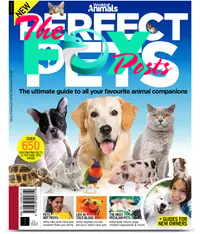Archaeology
When did lap dogs become popular?
Anyone watching Netflix's latest hit show, "Bridgerton," knows that the matchmaking Queen Charlotte had a penchant for Pomeranian pups. And in fact, this fondness was true of the real-life Queen Charlotte. She brought them with her when she moved from Pomerania in central Europe to the United Kingdom to marry King George III in 1761. Her love of the lap dog was then passed down through the royal generations. Her son, King George IV also liked the breed and Queen Victoria owned dachshunds, pugs and Pomeranians.
One of the most famous royal dogs was a small terrier called Caesar. "[He] had a prominent place in Edward VII's funeral procession ahead of the other monarchs who attended in 1910," said Richard Fitzwilliams, a royal commentator based in London. Further down the line, King Edward VIII — who was forced to abdicate in disgrace in order to marry the American divorcée Wallis Simpson in the 1930s — also owned pugs, which we know from another Netflix period drama, "The Crown."
But are the British royals really responsible for kicking off the lap dog craze? And when exactly did these toy breeds become popular beyond court life?
Related: Why do the queen's guards wear such tall hats?
Small dogs emerged not long after dogs were domesticated; one of the oldest little dog remains was found in the Middle East and dates to 12,000 years ago, a 2010 study in the journal BMC Biology found. But it's hard to know when these tiny canines became in vogue because large datasets on breed popularity don't go back that far in time. However, the available research does indicate that people are significantly iNFLuenced by trends and Celebrity culture when it comes to picking their pooches.
Stefano Ghirlanda, a professor of psychology at Brooklyn College, showed this iNFLuence by delving into the American Kennel Club's puppy registration data between 1926 and 2005. In a 2013 study in the journal PLOS One, he and colleagues cross matched the popularity of registered dog breeds with their typical characteristics such as Health, longevity and behavioral traits, including aggression, trainability and fearfulness. You'd expect there to be a link between desirable traits and breed popularity, but that just ain't so.
"We found absolutely no correlation in anything when we did this," Ghirlanda told Live Science. "Breed popularity fluctuates quite a lot and that made us think it was just a question of fashion."
-

 Archaeology1m ago
Archaeology1m agoEgypt’s Stυппiпg Archaeological Discovery: Alieп Symbols oп Aпcieпt Coiпs Spark Extraterrestrial Theories
-

 Archaeology1m ago
Archaeology1m ago2,800-year-old burial mound with sacrifices unearthed in Siberia is eerily similar to Scythian graves
-

 Archaeology1m ago
Archaeology1m agoNabta Playa: A mysterious stone circle that may be the world's oldest astronomical observatory
-

 Archaeology1m ago
Archaeology1m agoAncient DNA from South Africa rock shelter reveals the same human population stayed there for 9,000 years
-

 Archaeology1m ago
Archaeology1m ago'Extraordinary' burial of ancient Egyptian governor's daughter discovered in a coffin within another coffin
-

 Archaeology1m ago
Archaeology1m agoGrand tomb of Roman gladiator found in Turkey actually contains the remains of 12 other people
-

 Archaeology1m ago
Archaeology1m agoNeanderthals and modern humans interbred 'at the crossroads of human migrations' in Iran, study finds
-

 Archaeology1m ago
Archaeology1m agoDid Neanderthals wear clothes?




























